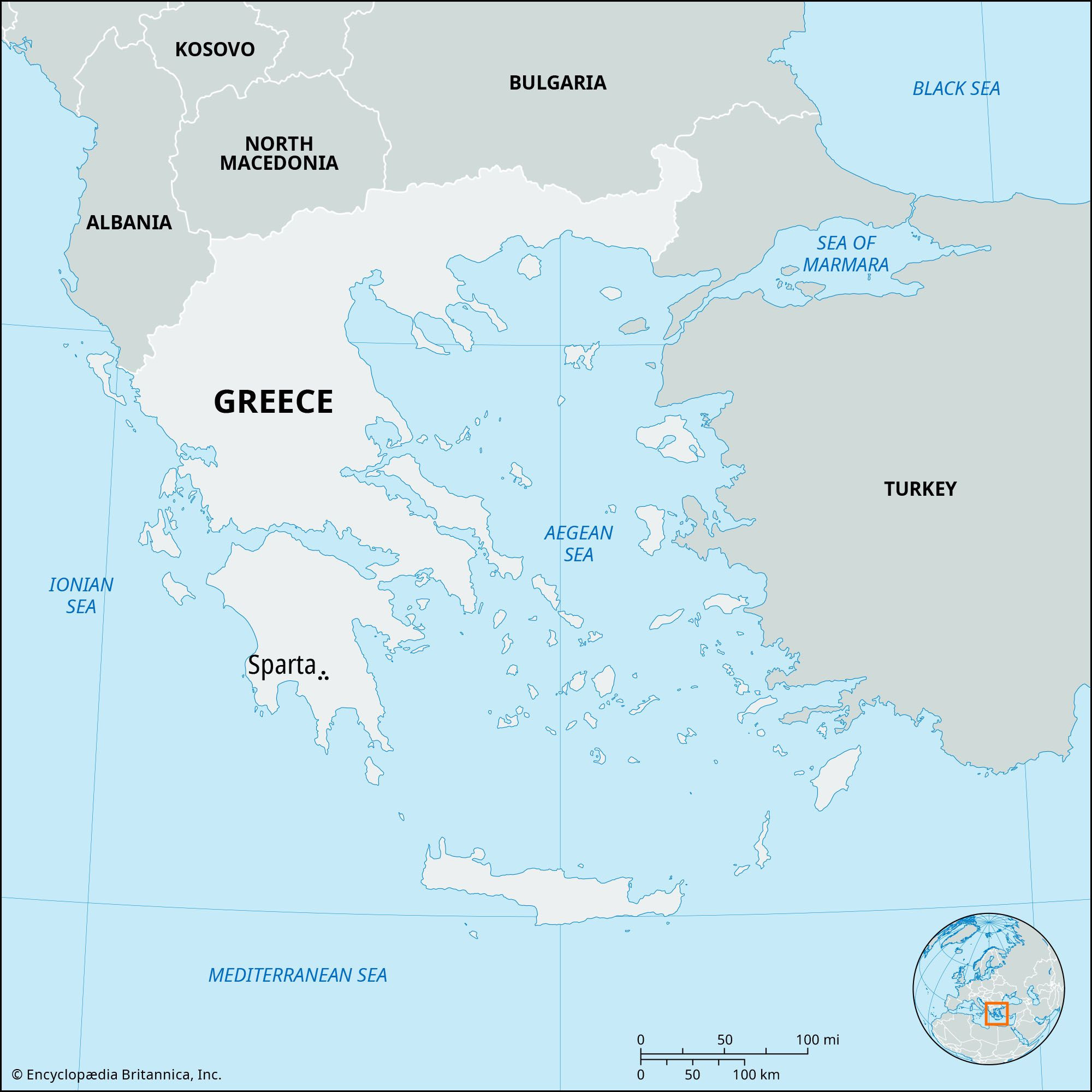Sparta, a name synonymous with bravery, discipline, and ancient Greek warriors, continues to captivate historians and enthusiasts alike. But Where Is Sparta Located? This legendary city-state, renowned for its military prowess and unique societal structure, is nestled in the southeastern Peloponnese region of Greece. Let’s delve into the geographical details and historical context to understand the precise location and significance of Sparta.
Geographical Location of Sparta
Sparta is situated in Laconia, a region forming part of the southeastern Peloponnese peninsula in southwestern Greece. More specifically, the ancient city lies on the western bank of the Evrotas River (also known as the Eurotas or Evros River), in a fertile valley surrounded by mountains. This strategic location provided natural defenses and fertile land, contributing to Sparta’s development and power.
Alt text: Map pinpointing the location of Sparta in Laconia, Peloponnese, Greece, highlighting its position within the region and country.
Administratively, modern Sparta is the capital of the Laconia regional unit within the Peloponnese region. It’s important to note that the modern city, Néa Spartí (New Sparta), was built in 1834 on the site of the ancient city. While not much remains of ancient Sparta in terms of standing ruins, archaeological excavations have revealed significant insights into its past. The sparsity of visible ruins today reflects the austere nature of Spartan society, which prioritized military strength over monumental architecture.
Historical Context and Significance of Sparta’s Location
The location of Sparta was not just geographically advantageous but also historically significant. Founded reputedly in the 9th century BCE, Sparta’s location in the Peloponnese placed it at the heart of ancient Greek civilization. Its control over Laconia and, subsequently, Messenia after subduing it between the 8th and 5th centuries BCE, gave it considerable territorial and economic power within the region.
Sparta’s inland location, while offering protection, also influenced its development as a primarily land-based military power, contrasting with the naval focus of Athens. Despite not being a coastal city itself, Sparta had access to the sea through its port of Gythium (modern Githion), located about 45 kilometers (28 miles) to the southeast. This connection was crucial for trade and naval operations, although Sparta remained fundamentally a land power.
Sparta’s strategic location played a vital role in major historical events. Its proximity to other powerful city-states like Athens, Corinth, and Thebes made it a key player in the political and military landscape of ancient Greece. The famous Battle of Thermopylae in 480 BCE, though not in Sparta itself, was a direct consequence of the Persian invasion route through central Greece, highlighting Sparta’s role in defending Greece. Later, the Peloponnesian War (431–404 BCE), which pitted Sparta against Athens, further emphasized the strategic importance of the Peloponnese and Sparta’s central position within it.
Visiting Sparta Today
For those interested in visiting Sparta today, the modern city of Sparti offers a glimpse into the region’s past and present. While ancient ruins are not as prominent as in some other Greek sites, visitors can explore archaeological areas and museums to learn about Sparta’s history. The location on the Evrotas River valley remains picturesque, surrounded by the rugged landscape of the Peloponnese.
Alt text: Image promoting a video about Sparta’s rise to power, enticing viewers to learn about Spartan history and military might.
Modern Sparti is a small commercial and industrial center, trading in local produce such as citrus fruits and olive oil, reflecting the agricultural richness of the surrounding Laconia region. The nearby port of Githion still serves as Sparta’s maritime gateway, connecting it to the wider world.
Conclusion
In conclusion, Sparta is located in the southeastern Peloponnese region of Greece, specifically in Laconia, on the banks of the Evrotas River. Its geographical location was instrumental in shaping its history and military focus. While the ancient city’s ruins are subtle, its legacy as a powerful and influential city-state of ancient Greece endures, attracting those keen to discover the land of the legendary Spartans. Understanding where Sparta is located is the first step in appreciating its historical significance and geographical context within the broader narrative of ancient Greece.



